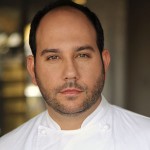
Jeffrey Nimer
During the holidays, Jeffrey Nimer has always been drawn to cooking large cuts of standing rib roasts, game birds etc. Christmas time is a special time for him as the family gets together with friends to enjoy the bountiful slow roasted meats. Jeffrey Nimer says he is partial to the Prime Rib of beef and has spent many years of his cooking career devoted to cooking this cut of beef perfectly.
According to Jeffrey Nimer, the majority of the population believes that “Prime” is a label pointing out the grade of cut. It is not. Prime simply is the name of the cut, referring to the “prime cuts inside of the beef,” says Jeffrey Nimer. “Choice” is typically the grade of most supermarket prime rib. It should be noted that the grade of meat labeled “Prime” – which is superior to “Choice” is available to dining establishments and through the butcher.
The USDA assigns a grade to each cut of beef based on its marbling, or level of fat naturally swirled through the lean. A cut of meat with an even fat distribution, explains Jeffrey Nimer, is more flavorful as the fat pockets act as a natural baster. A well-marbled cut also helps prevent overcooking due to the fat’s insulating properties.
A complete standing rib roast, also known as prime rib, is typically around 15 pounds. This should serve approximately a dozen diners. For larger crowds, Jeffrey Nimer suggests multiple roasts. According to Jeffrey Nimer, the term “standing” simply implies that the bones are still intact and the meat can stand alone, without outside support. To be defined as a rib roast, a cut of beef must begin from the shoulder and continue to the loin cut.
Jeffrey Nimer insists that bone-in roasts are considerably more flavorful and therefor preferable over boneless cuts. However, he states that if boneless is the only available roast, the same guidelines for cooking will apply. It is vital to check the weight of any meat product prior to cooking to determine optimal heat time and temperature, notes Jeffrey Nimer.
It is important, explains Jeffrey Nimer, to tie the prime rib before roasting. If left untied, the outer layer of meat will pull away from the rib-eye muscle and overcook. To prevent this problem, suggests Jeffrey Nimer, tie the roast at both ends, running the cooking twine parallel to the bone. Most butchers will tie your rib roast for you – so ask the butcher!
Before cooking, it’s important to trim any excessive fat from the outer layer, says Jeffrey Nimer. Excess fat is defined are one inch or more in depth. However, Jeffrey Nimer warns against trimming to close to the meat as prime rib is cut specifically with a certain amount of fat which adds flavor –the most important aspect of the meat.
For even cooking, says Jeffrey Nimer, let the roast stand for half an hour before subjecting to hear. The roast must come to room temperature. This should take approximately 3 hours and is achieved by loosely covering the meat and sitting out, away from sources of heat and cold. Possible complications of beginning with cold meat are:
- Increased cooking times
- Unevenness
- Overcooked edges
- Raw center
It is fundamental–slow and low is the key, do not rush the meat or slice it too quickly. You must let the rib sit and rest. According to Jeffrey Nimer, this is the most crucial part of the cooking process. Carry-over cooking is caused by residual heat transferring from the hotter exterior of the meat to the cooler center. As a general rule, the larger and thicker the cut of meat, and the higher the cooking temperature, the more residual heat will be in the meat, and the more the internal temperature will rise during resting due to carry-over cooking. This means the meat must be removed from the heat at an internal temperature lower than your desired final internal temperature, allowing the residual heat to finish the cooking, says Jeffrey Nimer.
Lastly, points out Jeffrey Nimer, you will want to use a very sharp knife when slicing your rib roast. Using the chime bones as a guide, slice the meat alongside of each bone and place on a large dinner plate. Be sure to save the juices from the bottom of the pan, they will be an integral part of the au-jus. Jeffrey Nimer suggests serving the roast with Yorkshire pudding and any other side dish you desire.
Leave a Reply
You must be logged in to post a comment.